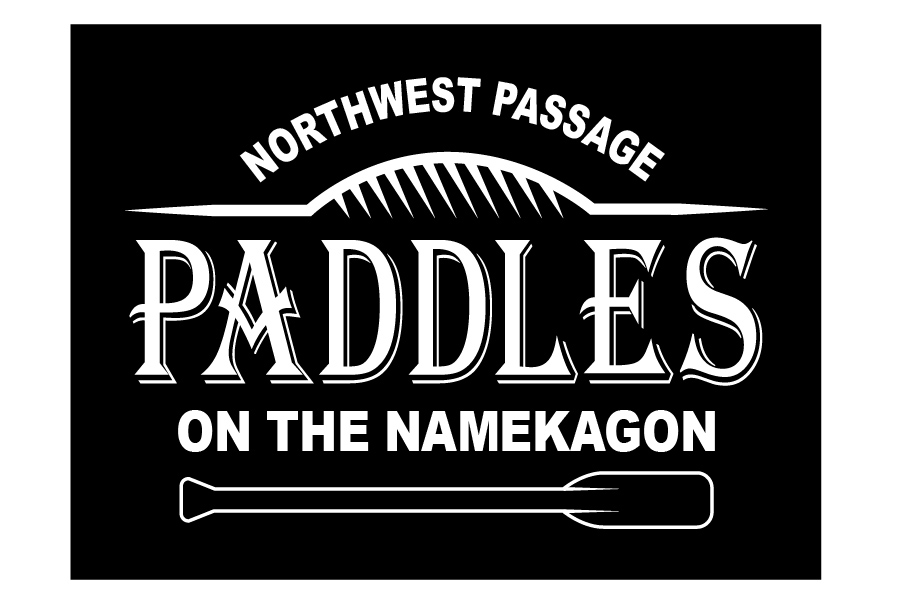When Branda Thwaits, National Park Service Ranger, heard talk about possibly halting upkeep of Schaefer Cabin, she knew something had to be done. It was a special spot for her and for her husband, Ben, and its sturdy log walls, set high on the banks of the Namekagon, had seen almost a hundred years of history float by. Constructed in 1927, Schaffer Cabin is at once a portal to the past and a place that sits firmly in summertime—all year round. It was constructed as part of the popular middle-class movement of the early 1900s to spend summer away from the city, surrounded by nature, and engaged in plenty of outdoor recreation.

In Northwest Wisconsin, that recreation was fishing. According to local legend, the popularity of the area near Schaefer Cabin was due in part to baseball star, Gus Munch, pitcher for the St. Paul Saints in 1897. In a Chicago newspaper, he raved about the prime bass fishing in Webb Lake. Whatever the inspiration, somehow Charles Nutt and his son Stanley were drawn to the area and moved from Minnesota to work in the booming timber industry, driving logs downriver as “river rats.” Eventually, the father/son team turned their log expertise to a different tack when they constructed a series of cabins in the 1920s. One of these was Schaefer Cabin. Downriver, they erected Namekagon Lodge, which became a popular fishing resort.
Due to its architectural integrity and high aesthetic quality, in 2002, Schaefer Cabin was declared eligible for the National Register of Historic Places, and the National Park Service has set strict rules to keep as much as possible original or in the original style—even removing a nail from one of the giant log walls is a rule-breaking offense. When the aluminum gutters were replaced a few years ago, new ones were shipped from a special manufacturer to match the fancy intricate style of those originally installed in the late twenties. This sense of grandeur pervades the property. Some of the most impressive features include the giant stone fireplace constructed of beautiful round stones and the bright, window-filled porch added to the original structure in the sixties.

Bright Windowed Porch added in the 1960’s

Another view of the porch
I spoke with Jean Schaeppi-Anderson, Cultural Resource and Interpretive Specialist for the St. Croix National Scenic Riverway, about what makes Schaefer Cabin so special. She said that the cabin evokes “a sense of the simplicity of construction.” This simplicity is what creates Schafer’s palpably rustic aura. Schaeppi-Anderson went on to say that “using resources from the area can make a beautiful home feel like it belongs there, so it becomes a part of the landscape rather than a real intrusion on it.” She explained that the cabin is so complementary with the surrounding landscape because, consistent with the construction techniques of the era, materials used were simply those that were available nearby, a practice that allowed the final structure to stand almost as a living extension of the river and surrounding forest.
Branda and Ben, familiar with the magic of Schaefer Cabin, put their heads together and came up with a plan to breathe new life into its thick wooden walls. The idea was to make it a retreat center for the youth of Northwest Passage. Time at Schaefer Cabin is distinctly different from time spent elsewhere—it has a certain non-linear fluidity that makes visiting the property especially therapeutic. Priorities are changed, hardly recognizable from those strictly observed at work or school. Tucked deep into the woods and with a view of the river through emerald leaves, it would be a refuge from daily routine and a home base for new and exciting photography excursions around the St. Croix River Valley. It would also be a gathering place for local artists and therapists to share their ideas about the expressive arts and nature therapy.
The National Park Service was receptive to Branda and Ben’s idea, and entered into a five-year cooperative agreement that allowed the In a New Light program to use the cabin as long as Northwest Passage arranged for upkeep and maintenance. Schaeppi-Anderson explained that this arrangement was mutually beneficial, “I think it’s a great opportunity for us…We were looking for ways to preserve [the cabin] and also have it in use. Northwest Passage provided an opportunity to do that.”

Exposed pine walls
On a sunny day in June, a gaggle of staff and expressive arts interns trouped to Schaefer Cabin armed with long yellow rubber gloves, fashionable facemasks, Pinesol, and bottles of Windex. We found the cabin in great shape, but there were a few surprises provided by Mother Nature. Not fifteen minutes into our cleaning mission, a pair of fast-flying bats prompted a couple of shrieks from the crew. A huge white puddle on the floor with a smattering of 3-pronged tracks along the wooden floorboards evidenced an uninvited turkey determined to leave his mark.

Kitchenette
As we cleaned, I imagined the cabin in its future state—filled with cushy furniture, photographs from the In a New Light program, and with the youth of Northwest Passage, gathered around a long wooden table enjoying a meal, or sitting by the fireplace having a lesson about notable nature writers. Outdoors, I imagined them down by the river, learning to find the best places to fish, or in the woods cataloging native species, or roasting dinner over the fire ring after a day of hiking. In the spirit of Northwest Passage philosophy and through the partnership of the National Park Service, the In a New Light program has given Schaefer Cabin a second chance. The one hundred years of history witnessed by the solid pine walls will not soon be coming to an end. Instead, it will be a place for new memories to be made and another place for Northwest Passage to continue its mission of hope.
Corey, In a New Light’s film and video intern, made a super cool time lapse that catalogued our day of cleaning and fun:
Special thanks to Jean Schaeppi-Anderson for sharing her historical expertise regarding Schaefer Cabin.



Recent Comments